**This is a guest post by Matthew Apsokardu. A student of Okinawa kenpo Karate and Kobudo for over 13 years, Matthew has become best well known for his writings at Ikigai | Blogging the Martial Way**
The dojo is a wonderful place isn’t it? Bright lights, open space, flat floors…nice and predictable. In fact, it serves as a perfect petri dish for learning techniques. Unfortunately we aren’t always so lucky to find ourselves in such ideal circumstances.
Terrain and environment is a big issue that sometimes gets overlooked during martial arts training. Although it might not seem like a big deal at first (a good technique is a good technique, right?) different environments can change up a successful self defense game in an instant.
Is it wise to go to the ground if there is broken glass there? Is it wise to grapple if someone has a knife? Would you want to punch someone in the chest if they are wearing a thick winter coat?
These kinds of contingencies can never be predicted, but practitioners of the arts can create a mindfulness of there existence.
Making the Mental Adjustment
The first key to planning for environment is to make the mental leap that the unknown exists. No matter how good your technique, when faced with a self defense problem, it is unlikely things will work out as cleanly as you want them to.
Accept that it won’t be pretty. Understand that getting out alive and hopefully less worse for the wear is the ultimate goal, even if things didn’t go smoothly.
Training Tips for Training
My biggest piece of advice for increasing your awareness is to take the time to step out of the box. 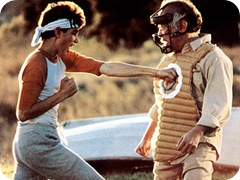
First, step out literally. Make the effort to train outside your dojo, whether it’s at home, in a parking lot, or in the backyard. Wear street clothes that you normally wear on a day to day basis.
By doing this, you’ll be able to get a feel for how your non-gi clothing reacts. Furthermore, you’ll be able to identify bad habits you may have in shoe, clothing, and accessory choice.
Second, step outside the box conceptually. Turn the lights out in the dojo and train in the dark (unless it gets pitch black, then use a little bit of light). Use multiple opponents, sometimes with weapons, sometimes without.
Most of all, put yourself into situations where you think ‘ohh crap!’, and feel very uncertain. This is important because you can confront those feelings of uncertainty in the safety of the dojo environment. If you wait to feel panic and stress until an actual confrontation, you can’t be sure if you’ll know how to manage it.
**A personal thanks from me to Matt for writing my first-ever guest post! …It’s quite exciting really :-) It’s a great post with an important message – a link to Matt’s site, Ikigai | Blogging the Martial Way, is also available in my Links column on the right. Please feel free to comment with ideas and anecdotes from your own experience in training to plan for various environments.**
The Arm Drag is a ridiculously simple move, so simple that I don't even like thinking of it as a technique in itself! To perform it, you just need to grab, pull and guide your opponent's leading/attacking arm (yes, with more finesse than I've described it). It works on the age-old martial arts concept of using your opponent's size, weight and momentum against them. That is, when your opponent's momentum is advancing forward (or alternatively, his posture is such that his size and weight are pushing his body forward), you grab and guide him in the direction he was already moving (often pulling him off-balance). Depending on the scenario, the move can be performed with explosive force or with gentle, well-timed grace. Here's Marcello Garcia showing you how it works:
Long & Short
Personally, I like the break the arm drag down into two categories: The Long Drag, and the Short Drag. A long drag involves you gripping your opponent's wrist/forearm and guiding him a longer distance (think: Aikido) – this movement becomes especially useful in conjunction with wrist locks, sweeps and heavy striking techniques (more so from when you are standing). The Short Drag involves you gripping your opponent behind the elbow, usually resulting in less overall movement – the resulting scenario is usually ideal for shoulder barges, major hip throws and taking your opponent's back (though an elbow to the back of the head never goes amiss either!).
If timed correctly, a Long Drag can be used to lead into a Short Drag. Both are suitable for gi/no-gi applications.
Application
Arm drags are especially useful against aggressive or dirty fighters who opt to shove, tackle or grind their arms into you (usually their forearm across your face). In fact, the reason I first used an arm drag in BJJ is that someone in my guard was grinding his forearm over the bridge of my nose while punching at my ribs; I pushed his elbow across, (short) dragged his arm and took his back – love connection made.
Furthermore, arm drags are especially well-suited for smaller fighters (finally, gravity is on our side!) as their opponents often need to lean further forward (or in my case, almost crouch!) in order to efficiently attack. There's a psychological aspect that helps here too – I find that most fighters (even guys who'd otherwise opt for a more defensive/reactive style of playing) when facing a smaller opponent immediately want to dominate by rushing forward or dropping their weight on them.
As I've mentioned, the arm drag is ridiculously simple – so simple, that people get it wrong all the time! It literally is guiding your opponent in the direction he's already poised to go.
-
Don't make the mistake of tugging and pulling in a direction your opponent clearly isn't moving – to move him will take a lot of strength and it will tire you out in the process.
-
Remember to move your body appropriately (it's all in the hips) when attempting a long drag otherwise you may find that you've just given your opponent a better position – I think of it like this: I'm dragging my opponent a longer distance, so instead of counting on him to make the journey all by himself (your opponents aren't the most trustworthy people after all), I'll help him along – either by scooting to the side or step around myself (tai sabaki).
The Ki/Chi debate is all over online messages boards. Personally, I've never bothered to comment on any but I do very much enjoy reading the arguments from both parties (believers and non-believers). The debates do tend to get unnecessarily heated and often end up with plenty of personal insults and online forum warrior-style challenges. Which is a shame because I think it is a really interesting topic!
What is it?
Ki is explained to be a 'natural energy' or 'energy flow' which (depending on your source) either fuels life forms or is an element of life force or is a naturally present element. It is explained to be a different concept to the Chinese chi (or qi), which is allegedly less well-defined than its Japanese counterpart. Though essentially, the terms are somewhat synonymous – they're both just referring to 'natural energy-ish stuff that we can't quite explain'… the Nei Ching (credited as one of the first Chinese references to ki) describes it as a 'universal energy that nourishes and sustains all life'. Its application is most often used for healing practices (think Reiki), but it is best known internationally for its martial arts claimants. I'll be using the term ki since I'm more used to saying it (background in Japanese martial arts etc) but I'm referring to both concepts (which are really just one concept).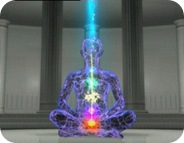
An alternative explanation stems from Hindu beliefs regarding chakras, which are believed to be the nexus of metaphysical and biophysical energy residing in the body. I remember reading (but not the source…sorry, it was a long time back!) that ki is said to be derived from myths/superstitions regarding the second primary chakra known as Swadhisthana (meaning "One's own abode"). The idea is that the Swadisthana is where many untapped, 'potential karmas' (samskaras) lie dormant. 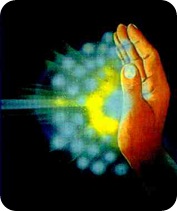
Adding to that, the second chakra is also said to home Kriya shakti (literally "strength of actions/deed/effort"), which in yogic (as in Yoga) traditions is considered to be outward manifestations of the power of thought. I further remember coming across articles that Prana (Sanskrit for 'breath'), in Vedantic philosophy, can be harnessed and physically manifested – something which was associated with the Kundalini form of yoga.
Note: For those of you that are well-versed in Hinduism, Sanskrit traditions, or yoga, please do let me know if I'm off on the details – it's been years since I read about any of the topics and since I'm in the office at the moment (yes, I write my posts when I'm not being productive) I'm writing on memory alone (…and I get hit in the head a lot)! Hmm…maybe I'll get out my copy on the Upanishads when I get home…
Popular Culture
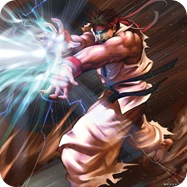 Probably best known in its 'energy blast' form, ki in popular culture is seen as a mystical, magical form of energy drawn out of nature for use in healing and attacking. The Street Fighter series refer to it as 'Hadou', and its most famous depiction is probably Ken and Ryu's hadouken (…shame on you if you don't know what I'm talking about). The idea generally plays a big role in most fighting games and many manga, anime and movies – Fatal Fury, Naruto (which refers to it as chakra), Hero Tales etc.
Probably best known in its 'energy blast' form, ki in popular culture is seen as a mystical, magical form of energy drawn out of nature for use in healing and attacking. The Street Fighter series refer to it as 'Hadou', and its most famous depiction is probably Ken and Ryu's hadouken (…shame on you if you don't know what I'm talking about). The idea generally plays a big role in most fighting games and many manga, anime and movies – Fatal Fury, Naruto (which refers to it as chakra), Hero Tales etc.
I think it's this representation of ki that upsets people most. Not so much when it is used in games, anime or movies but rather when they see the equivalents in martial arts practices as in the following section.
Martial Arts – The Mystical Version
"With concentration, karatekas can move their ki up and down, so their source of energy is higher and lower. Experienced karatekas generally center their ki, in order to achieve maximum balance and power. Ki is absolutely crucial in the higher levels of karate: It gives masters the power they need to break blocks and topple much larger opponents."
- Tom Harris http://people.howstuffworks.com/karate6.htm
The mystical explanation describes ki, our energy flow, as a source of power for the martial artist. It is intangible and of some supernatural origins – it is stored in the hara (Japanese) or dantien (Chinese), about an inch or two below your navel, and can be channeled into the different parts of your body enabling you to perform feats previously not possible. Masters of ki are further able to control the energy so far as to project it from their bodies in a sort of energy wave (but lacking the flashy, attention-seeking appearance of the hadouken).
Other seemingly far-fetched claims involve using ki to manipulate objects and stop babies from falling down staircases in a fashion similar to telekinesis. As seen in the above video, attempts to prove ki blasts etc. tend to fail against people from outside of the performing dojo (at least all the ones I've seen) – various explanations have been provided for these repeated failures though none have satisfied the critics.
The Shaolin Monks are famous for performing 'iron body' techniques which demonstrate their ability to harness and channel ki through Qi-Gong training. A popular ki-demonstration used by street magician-esque martial artists (think Chris Crudelli) is that of the 'Unbendable Arm', which is in reality a feat that has less to do with esoteric energies and more to do 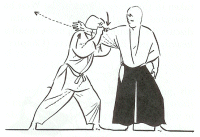 with maintaining a superior biomechanical position (with some positive thinking for good measure) . As such many of these alleged ki demonstrations (even though they occasionally require a lot of skill) lack the ability to convince many on the existence of ki.
with maintaining a superior biomechanical position (with some positive thinking for good measure) . As such many of these alleged ki demonstrations (even though they occasionally require a lot of skill) lack the ability to convince many on the existence of ki.
"There is nothing so strong as gentleness, and nothing is so gentle as real strength."
- Ralph W. Sockman
The Science Behind Ki
Ki is alleged to travel through the body's 12 'constant' Meridians (as well as some others but less directly). Ki flow must be in a single direction – Ascending or Descending (sometimes described as Positive and Negative) depending on whether the respective Meridian is dominated by Yin or Yang. Furthermore, the flow can be stimulated, blocked, and unblocked through concentration and physical intervention (such as pressure point attacks).
A few scientific tests have been conducted in order to test for the presence of ki but as of yet, nothing has provided any viable positive results. Various theories have propped up suggesting that ki is a way to refer to our body's natural capacity to produce electricity and plasma in which case, the healing properties of ki can sort of be accounted for…but not so much in regards to its martial application (or the ki blast).
Martial Arts – The Logical Version
It's plausible that ki doesn't really refer to ki or any mystical elements at all. Many suspicions lie in the direction that ki is really more of a metaphor than anything else. Given that in the past, the vast majority of martial arts students were uneducated and of a rural background, masters would've needed a means to better illustrate various concepts (biomechanical as well as psychological) via a comfortable metaphor that the students could easily envision. This is supported by the fact that in the Japanese language, -ki is often used without any magical or mystical connotations (for example: genki means "good health") – so there is some possibility that the concept is something that was simply lost in translation once it arrived in the West (well, except in the case of ki-blasters).
In this respect, I suppose the purpose behind ki as a conceptual metaphor in martial arts would be threefold:
-
1) Open, connect and relax the body; regulate and control breathing patterns;
-
2) Focus, develop and strengthen notions of 'intent' whilst performing techniques;
-
3) To create an understanding of the synergy between points 1) and 2).
Furthermore, the idea of ki could be (and is) very easily used as a motivator. For students who suffer from insecurities and self-doubt, the belief that they are able to draw from a greater source of power could indeed provide them with the confidence and motivation needed to excel in their art.
And then there is 'Kiai-jutsu' – that is, using the kiai (which can be understood as, but does not literally translate to, 'spirit yell') as a weapon. The kiai is essentially a loud shout used in Karate (and many other arts) in order to startle an opponent – Kawazoe's kiai is a good example of this! – as well as to teach beginning students to exhale when attacking. Of course to some, the kiai is more than just a loud shout, as denoted by the kanji it is comprised of (ki + 'ai' which is 'harmony' or 'love'), the kiai is interpreted as the projection of sound harmoniously fused with energy or spirit (hence, 'spirit yell').
Morihei Ueshiba (founder of Aikido; Note: Aiki is comprised of the kanji for Kiai written backwards) can be seen in various demonstration videos exerting the power of his kiai in which he intimidates/startles attackers to the extent of toppling them backwards. Though it should be noted, these 'attackers' are his students who probably reside a healthy fear of their teacher.
A more far-fetched example is the 17th Century story of Matajuro Yagyu, who was practically disowned for lacking talent as a swordsman (he was from the Yagyu clan, famous for its swordsmanship) and also due to some misconduct. After training with various masters, Matajuro returns to plead acceptance (but through an intermediary as his father refused to see him!); he is unable to show his skill due to the lack of an opponent. Instead he fixes his intent on some sparrows in a distant tree, he utters a loud kiai and the sparrows fall to the ground motionless. Shortly after, the sparrows regain consciousness and fly away. Matajuro went on to inherit his father's system. Note: Japanese sword schools often referred to this as 'toate no jutsu', the 'art of striking at a distance'.
A better known anecdote featuring Matajuro is his encounter with Zen sword master Tsukahara Bokuden. Matajuro asked the master, "How long will it take me to master the sword?" to which the old man replied, "About five years if you train very hard."
"And if I trained twice as hard? Then how long would it take?"
"Oh – in that case, it'll take 10 years."
Plausible Deniability Section (because I'm an optimist…ish)
As far as my experiences go – which I admit are very limited given that I've never really gone searching for ki-based arts and that I've never really devoted any amount of training to any system that is ki-based – I've not witnessed anything that would really fit the conditions of mystical, supernatural ki (did I mention that I've heard 'ki-enhanced music'? Live performance - True story) – and really, what we call 'supernatural', is really just something we haven't yet broken down in specific scientific terms.
Given that the idea behind 'ki as a metaphor' is to simplify things, it's actually pretty complicated – the synergistic kinetic energies created by our bodies when engaged in activity with appropriately conditioned intent/focus whilst maintaining a relaxation on the muscular state; ability further enhanced by the efficient regulation of respiratory patterns – something like that, right? …If I had been a master at the time, I think I would've just picked up a cane and said, "Concentrate or I'll give you a baboon's ass… okay, good – now relax your bodies".
That's not to say I have a definite belief that ki doesn't exist. I sincerely acknowledge the possibility of ki as a yet not properly understood energy/element that is processed either in nature or the human physiology itself that can be channeled through the muscles to enhance our own physiological functions (quite possibly in a similar way to oxygen). Just because we have not discovered something yet via a scientifically empirical study doesn't necessarily preclude its existence. Perhaps our understanding of ki is similar to our previous misunderstanding that the world is flat – in this case, ki would be akin to the theory of gravity.
"Human salvation lies in the hands of the creatively maladjusted."
- Martin Luthor King Jr.
I guess that makes me somewhat agnostic regarding ki. Either way, it's not something to fuss over – whether you're a diehard ki zealot or a diehard ki atheist, let those who believe, believe. And leave them be who would rather not open themselves up to the possibility. Calling for challenge matches and being a nasty web warrior (or on the other hand, a pretentiously enlightened web 'master') is just a bit lame. Don't waste your time, go train instead!









